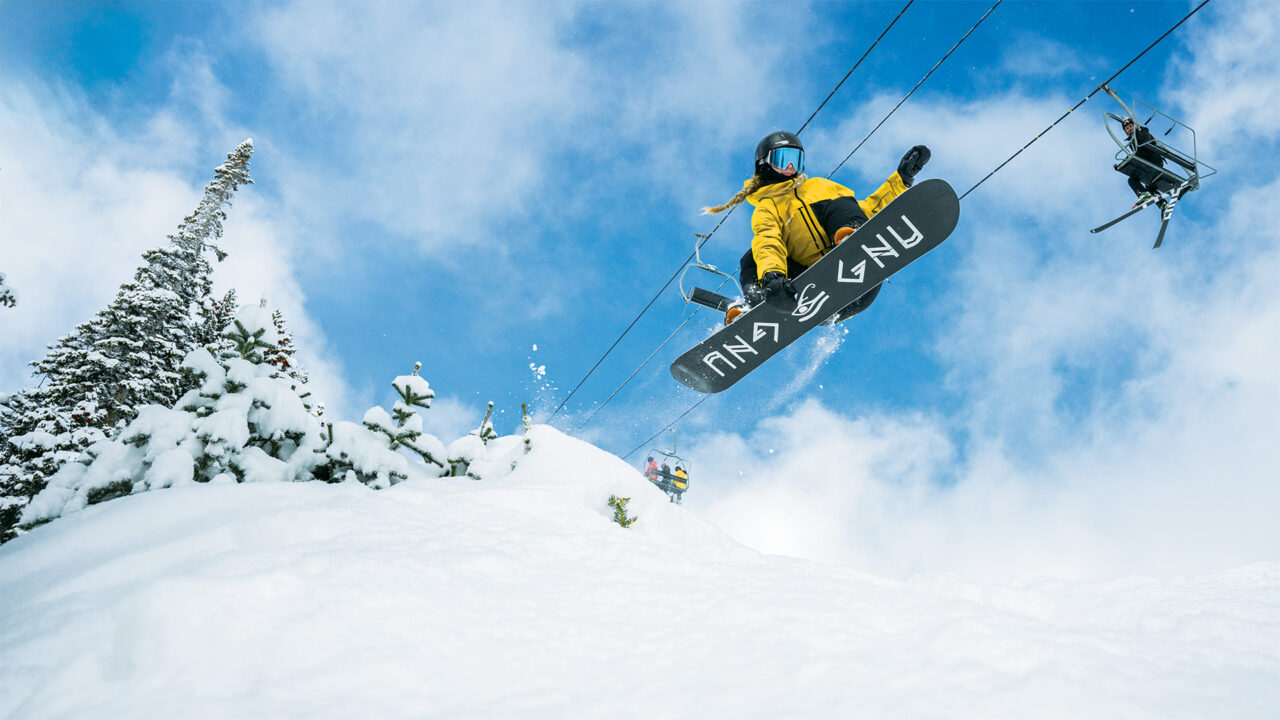The Local newsletter is your free, daily guide to life in Colorado. For locals, by locals.
Colorado skiing—OK, snowboarding, too—is different.
In the Rockies, the snow is less precipitation than it is frozen air sent from the heavens. Bald ridgelines sparkle under bluebird skies, spilling into never-ending aspen glades. Massive bowls look like God took an ice cream scoop to the flank of a 12,000-foot peak. Ribbons of white sluice across evergreen forests, leading to lodges that serve hot cocoa and double IPAs. Here, winter isn’t endured—it’s exalted.
The challenge for locals, then, is where to spend their OOO days and hard-earned dollars. Colorado boasts two dozen ski resorts and a handful of smaller municipal hills, each with its own vibe. Some shine as family-friendly playgrounds for learning and growing a love for the sport. Some impress with their stomach-dropping chutes and cliffs. Some are blessedly anti-resort. The right mountain for you depends on your crew, your style, and, yes, the pass you’re carrying.
That’s where this guide comes in. On the following pages, you’ll find an introduction to Colorado’s major ski areas: what each one does best, our favorite amenities and extras, and, of course, which run to try for a quintessential taste. It’s time to find your winter match.
Jump Ahead:
- Arapahoe Basin
- Aspen Highlands
- Aspen Mountain
- Beaver Creek Resort
- Breckenridge Ski Resort
- Buttermilk
- Chapman Hill Ski Area
- Copper Mountain
- Cranor Ski Hill
- Crested Butte Mountain Resort
- Echo Mountain
- Eldora Mountain Resort
- Granby Ranch
- Hoedown Hill
- Howelsen Hill Ski Area
- Kendall Mountain Recreation Area
- Keystone Resort
- Lake City Ski Hill
- Lee’s Ski Hill
- Loveland Ski Area
- Monarch Mountain
- Powderhorn Mountain Resort
- Purgatory Resort
- Silverton Mountain
- Ski Cooper
- Snowmass
- Steamboat Ski Resort
- Sunlight Mountain Resort
- Telluride Ski Resort
- Vail Mountain
- Winter Park Resort
- Wolf Creek Ski Area
Ski Pass Collectives:
Read More: When Will Your Favorite Colorado Ski Resort Open?
Arapahoe Basin
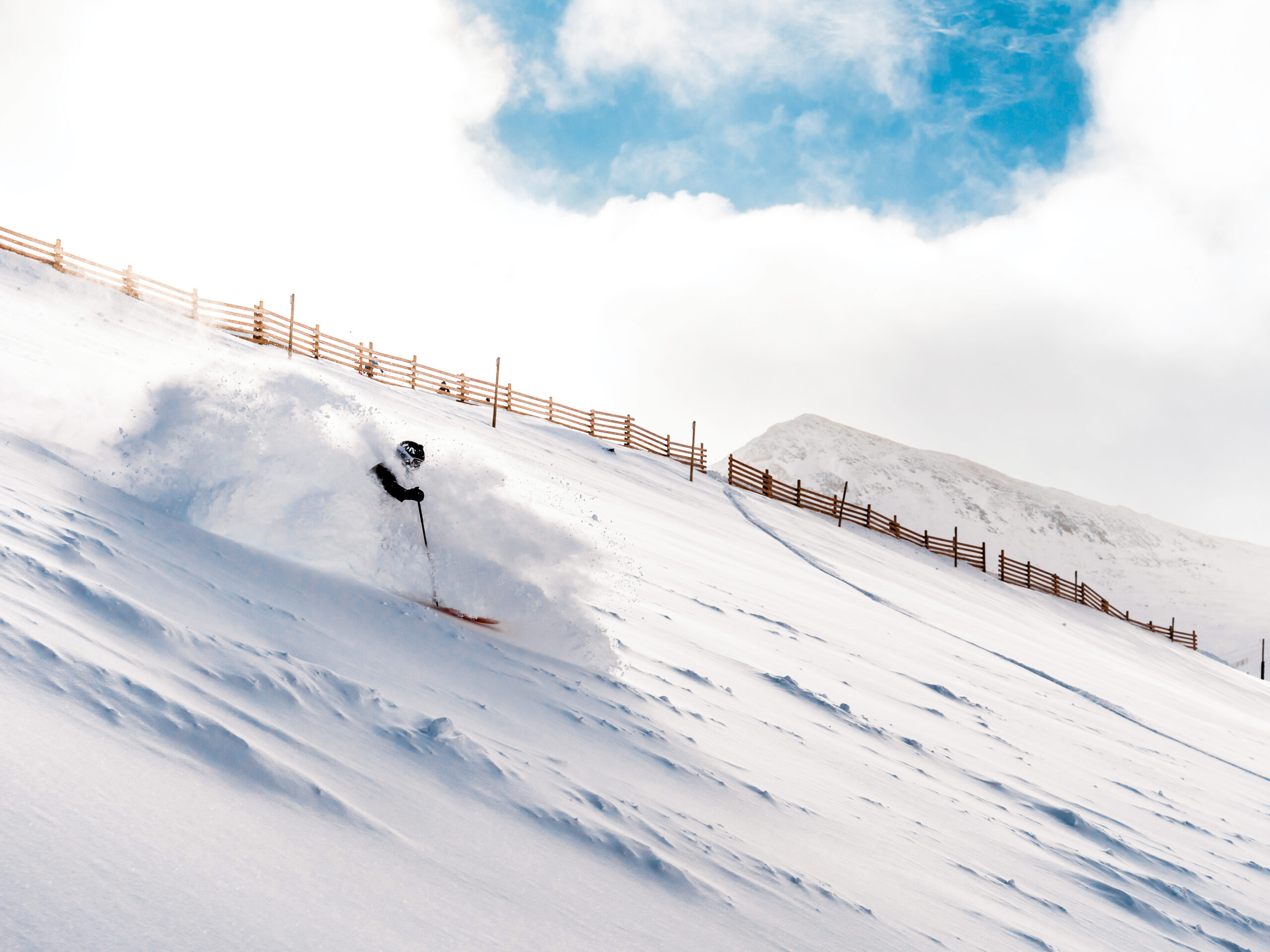
- Town: Dillon
- Distance from Denver: 68 miles
- Pass: CSCUSA, Ikon
If you measure ski days in vertical feet, no-frills Arapahoe Basin is the holy grail of grit. Nearly three-quarters of the ski area is the purview of expert riders, who bicker about which flume is best over beers at parking lot tailgates. One thing they agree on: The Pallavicini Lift services some of the state’s finest in-bounds terrain from a base area. Decide for yourself on Pali Cornice, where a shooting gallery of steeps spills into a mogul field on lower Main Street.
Read More: How Leaning Into Its Status as an Anti-Resort Made A-Basin More Profitable
Aspen Highlands
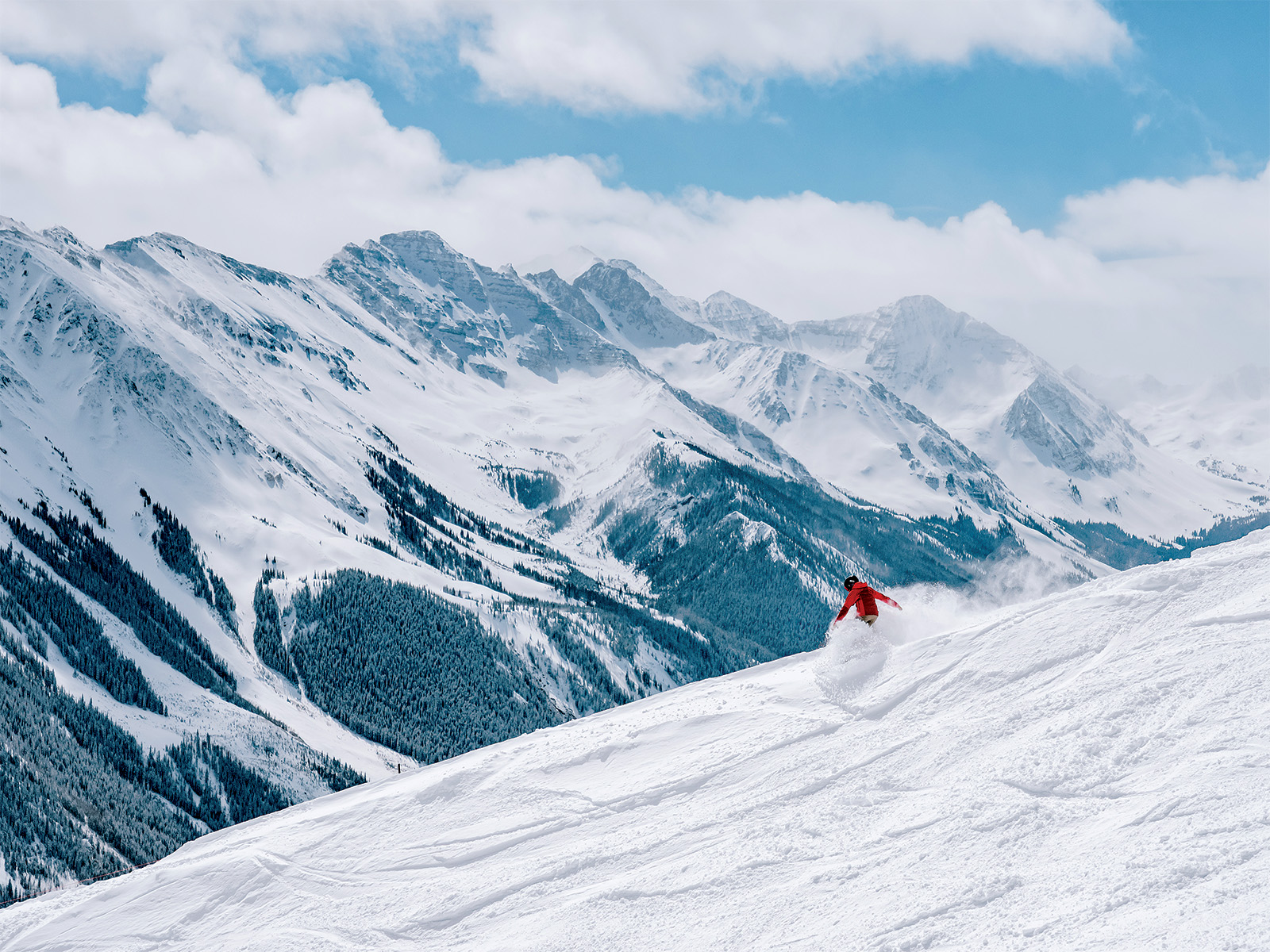
- Town: Aspen
- Distance from Denver: 160 miles
- Pass: Aspen Snowmass, CSCUSA, Ikon, Mountain Collective
Serious skiers swear by Highlands, and one peek at the trail map shows why: Nearly 80 percent of the mountain is shellacked in black and double black diamonds, including Highland Bowl, the state’s crown jewel of in-bounds extreme skiing. “It’s steep, long, and has very little skier traffic,” says Kim Reichhelm, a former U.S. Ski Team member who calls the Elk Mountains home. “You can always find good snow on its 20-plus lines.” To reach Highland, riders bootpack 782 vertical feet up a ridgeline from the top of the Loge Peak lift—a one-hour march. Their reward? A 2,500-vertical-foot plunge with bragging rights and face shots.
Aspen Mountain
- Town: Aspen
- Distance from Denver: 160 miles
- Pass: Aspen Snowmass, CSCUSA, Ikon, Mountain Collective
Known as Ajax to locals, Aspen Mountain is where Colorado’s ski scene struts its stuff. Sure, you’ll spot fur-trimmed parkas and gold lamé suits gliding into the gondola, but beneath the glitz is a mountain built for skiers who crave a challenge: There are zero green runs here. Chase glory in the Dumps, a series of east-facing chutes off the FIS chair. Each pitch is split by stands of trees, creating a fun rhythm of powder fields and tight glades that hold snow well after the last storm.
Fuel Up: Hit Stranahan’s Whiskey Lodge, a short walk from the Silver Queen Gondola, for a pretzel hot pocket filled with whiskey-smoked brisket.
Read More: Aspen Mountain’s Massive Expansion is Designed to Outrun Climate Change
Beaver Creek Resort
- Town: Beaver Creek
- Distance from Denver: 100 miles
- Pass: Epic
Most ski areas front-load beginner terrain near the base. But at Beaver Creek, half a dozen green runs pour off the resort’s 11,440-foot high point, gifting first-timers rare above-treeline vistas of Colorado’s serrated skyline, stretching south to 14,007-foot Mt. of the Holy Cross. Snap a summit selfie, then link Red Buffalo, a mellow cruiser along the Stone Creek drainage, with Cinch for a five-plus-mile route—one of the state’s longest top-to-bottom beginner routes.
Breckenridge Ski Resort
- Town: Breckenridge
- Distance from Denver: 80 miles
- Pass: Epic
Nearly a third of Breckenridge, which sprawls across five peaks in the Tenmile Range, is designated for intermediates. Coupled with a lively base area and a downtown where hard plastic boots count as dress shoes, it’s catnip for Front Range skiers. True, Breck is the busiest ski resort in Colorado. To escape the fray, ride the Imperial chair, the highest lift in North America, to 12,840 feet. Skate skier’s right to pick a line down Whale’s Tale and link up with Northstar for a never-ending run that will make your ears pop. Showoffs: Tack on a short bootpack from Imperial to send Wacky’s, a butt-puckering Lake Chutes line in full view of the lift.
Buttermilk
- Town: Aspen
- Distance from Denver: 160 miles
- Pass: Aspen Snowmass, CSCUSA, Ikon, Mountain Collective
Of the Aspen foursome, Buttermilk alone is tailor-made for skiers who prefer their turns without tears. Three-quarters of the terrain is designated beginner and intermediate, with flowy, low-angle greens on one side of the mountain and black diamonds on the other—and a gigantic play structure called Fort Frog in the middle. Send groms to the insanely cool Hideout children’s center (it has a craft room) before a lesson, then rendezvous after on Buckskin, “which is fun to rip if you know what you’re doing but mild enough for learners ready to upgrade,” says Carbondale local and guidebook author Heather Balogh Rochfort.
Copper Mountain
- Town: Frisco
- Distance from Denver: 75 miles
- Pass: CSCUSA, Ikon
Few ski resorts are laid out in such a beautifully straightforward manner as Copper Mountain. Beginners get their ski legs on pristinely groomed greens like Prospector and Roundabout, accessed from West Village. Intermediates head to Center Village for a boost in steepness on Copperopolis and its blue brethren. And experts keen to feel a rush open the throttle down Oh-No to Rosi’s Run from East Village. “Skiing [Rosi’s] under Super Bee is where I learned how to ski fast,” says professional skier Kyle Negomir, who will return to his favorite trail this November as he vies for glory at the 2025 Stifel Copper Cup, part of the FIS World Cup tour.
Crested Butte Mountain Resort
- Town: Crested Butte
- Distance from Denver: 192 miles
- Pass: Epic
Craving a challenge? Set your GPS for Crested Butte, an intimidating rampart in the Elk Mountains. It’s more wild than manicured, but the quirky, colorful town wears its rugged reputation proudly. Dip your tips in on Rambo, a midmountain drop that locals claim is the steepest in North America. It’s a heart-pounding plunge that’s easily accessible from multiple lifts, including the intermediate-friendly Paradise Express—meaning less gnarly riders can skirt it on a gentler pitch and reconnect with their gutsier pals for a party lap to the base.
Eldora Mountain Resort
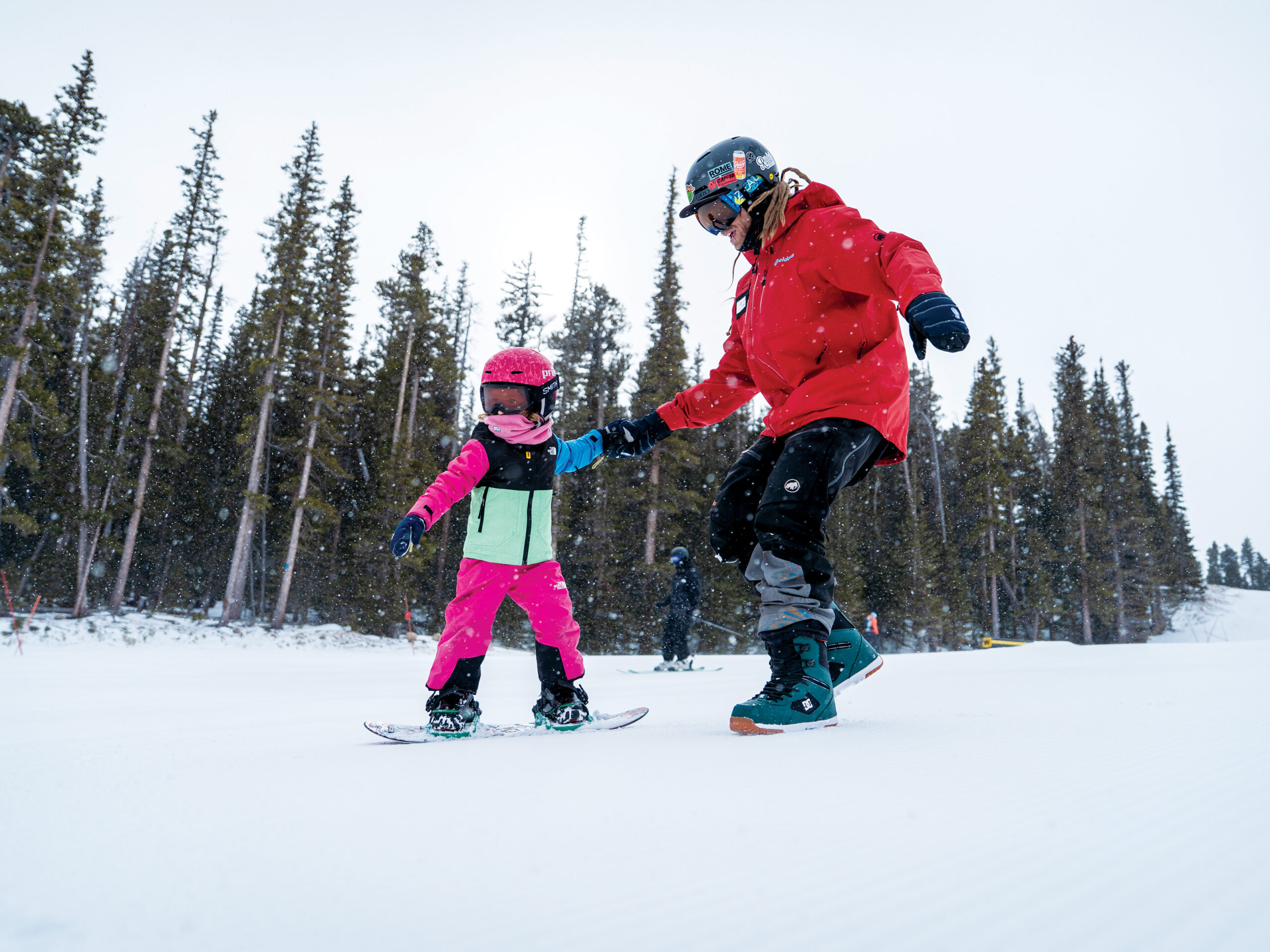
- Town: Nederland
- Distance from Denver: 50 miles
- Pass: CSCUSA, Ikon
In August 2024, ski resort holding company Powdr hung a for-sale sign on Eldora Mountain Resort. The exit had nothing to do with finances—“Eldora is profitable,” ski area president and general manager Brent Tregaskis promised—but rather with Powdr’s plans to focus on other opportunities more “in alignment with its founder’s and stakeholders’ goals.” (Read: ventures with its Woodward action-sports brand.)
This past summer, Nederland, which is situated about five miles from the ski area’s high-speed Alpenglow lift, made an announcement of its own: The 1,500-person community—a town with about 30 employees and a $3.2 million general fund—had inked a letter of intent to purchase Eldora. Using cash from municipal bonds, the town is poised to spend $100 million to $200 million to bring the mountain under its ownership as soon as this season.
What does that mean for Front Range Ikon passholders who point their Subarus toward Eldora when I-70 is a mess? So far, not much. The 680-acre ski area will remain on the Ikon Pass this season. The Eldorables will still learn to pizza down Little Hawk and Fun Gully. And regulars will continue to groan when the Corona lift breaks down on a powder day, cutting off the steep, deep, and treed glory of must-ski (if you’re an expert) runs like Salto Glades and Moose Glades.
What will change remains to be seen. Night-skiing operations and increased summer offerings have been proposed. Updates to lift infrastructure (cough, Corona) and snowmaking capabilities will be essential to keep Eldora competitive (and profitable), points out Andy Bigford, who co-authored the ski area’s biography, Eldora: Six Decades of Adventure.
Assuming that happens, Bigford adds, this will be “just another chapter. Eldora has always figured out a way.”
Read More: How Colorado Ski Patrollers Are Grinding to Keep Their Slopes Safe—and Their Profession Viable
Granby Ranch
- Town: Granby
- Distance from Denver: 86 miles
- Pass: CSCUSA, Indy
Granby Ranch leaves the mega-resort bustle to its neighbor, Winter Park. Here, it’s all about relaxed skiing and family-friendly turns. Two peaks split the duties: one dedicated to beginners and intermediates, the other to more advanced riders sneaking in steeps. For a run that shows off Granby’s sweet spot, cruise down Buckhorn, an east-side groomer that’s wide enough to build confidence. Thanks to a feature-filled fringe, experts won’t lose interest.
Keystone Resort
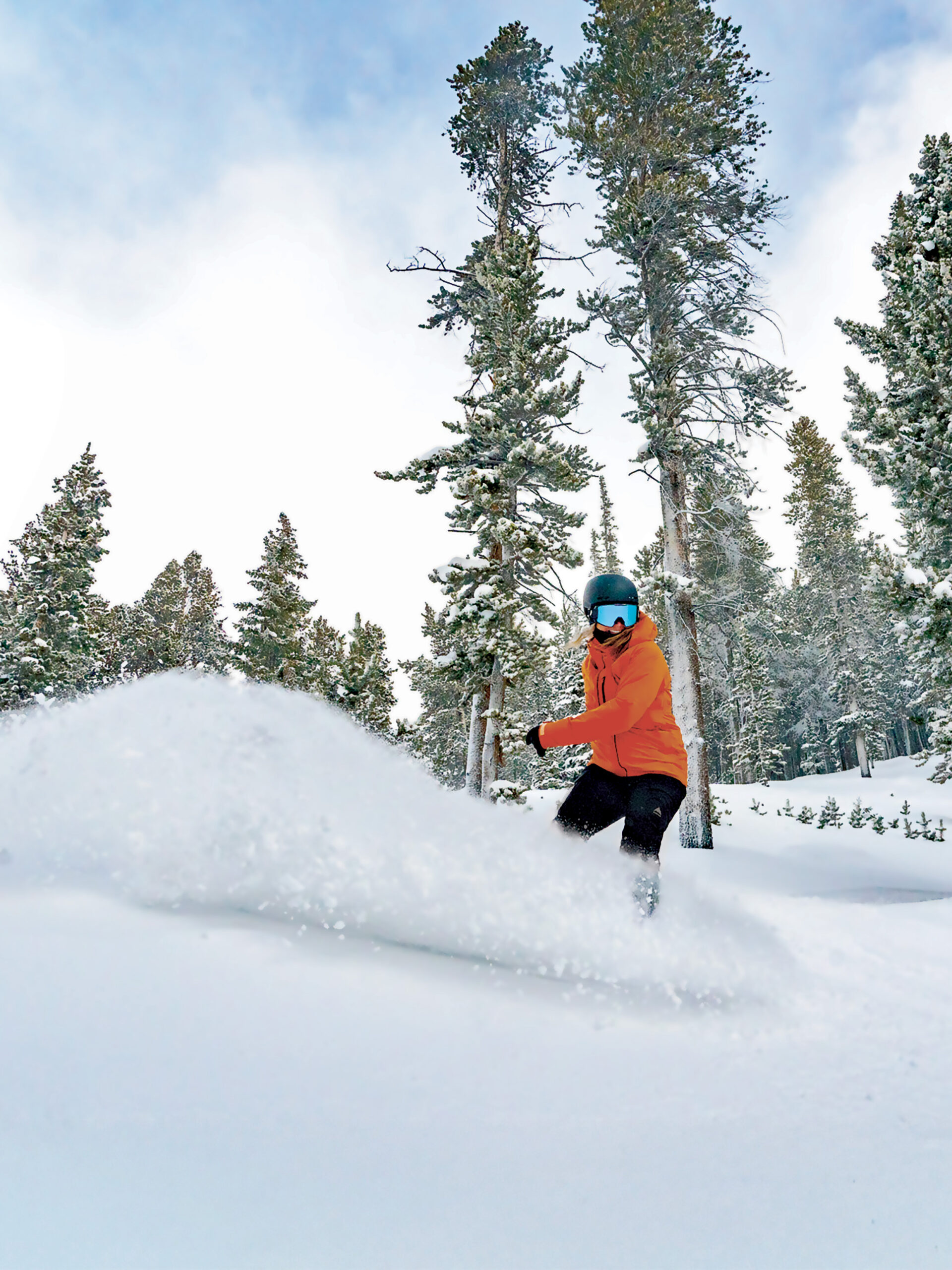
- Town: Keystone
- Distance from Denver: 72 miles
- Pass: Epic
Like its Epic brethren, Keystone caters to families, but it stands out for its logical layout (beginners won’t accidentally wander into expert terrain), daycare for children as young as six months, and kid-focused trails, such as Schoolmarm. A continuous, 3.5-mile descent from the top of Dercum Mountain (where there’s a snow fort!), it has a gentle and consistent pitch and passes three adventure zones where newbies can explore tunnels, embankments, and uninterrupted turns en route to the base area.
Fuel Up: Clop over to Goodz Tavern at Kindred Resort—that brand-spankin’-new complex in River Run Village—for a patio après of slow-cooked meats.
Loveland Ski Area
- Town: Georgetown
- Distance from Denver: 53 miles
- Pass: CSCUSA, Indy
To the untrained eye, Loveland Ski Area, which perches rather precipitously on the Continental Divide, might seem like a paradise solely for expert skiers and riders. Its newly accessible Porcupine Ridge promises some 500 vertical feet of likely untracked powder for those tenacious enough to bootpack 45 minutes from Chair 9 to get it. Oh, and intermediate and expert terrain make up roughly 87 percent of its 1,800 total acres.
And yet, in spite of those whoop-worthy offerings, “I have so many people say, ‘I learned to ski at Loveland,’ ” says its COO Rob Goodell. “People look left as they’re coming up I-70, see our terrain, and might get a little intimidated. But, boy, you also just came by this beautiful terrain at Loveland Valley that’s a great way to start.”
Split into two sections, Loveland Ski Area is composed of the larger Loveland Basin (which has a bunny hill) and the smaller Loveland Valley, just east. A low-angle playground for folks new to the sport, the latter’s two lifts and two magic carpets provide access solely to greens and blues—so wobbly first-timers need not worry about oblivious experts whizzing past en route to après. Plus, a Loveland Valley–only day pass costs just $50 ($30 for kids ages six to 14, free for five and under).
This season, the ski area unveils even more reasons to exit I-70 early and learn to ski or ride at Loveland Valley: Lift 7, a 40-year-old double, was replaced with a new, extra-wide triple-seater that’s easier to load and ride. Maintenance teams also regraded and cleared trees from Zig-Zag, Loveland Valley’s longest beginner trail, making it even better for French-frying (or pizzaing—no judgment here).
Fuel Up: Find grab-and-go sushi at the Loveland Basin Lodge food hall.
Read More: 6 Reasons to Shred at Loveland Ski Area
Monarch Mountain
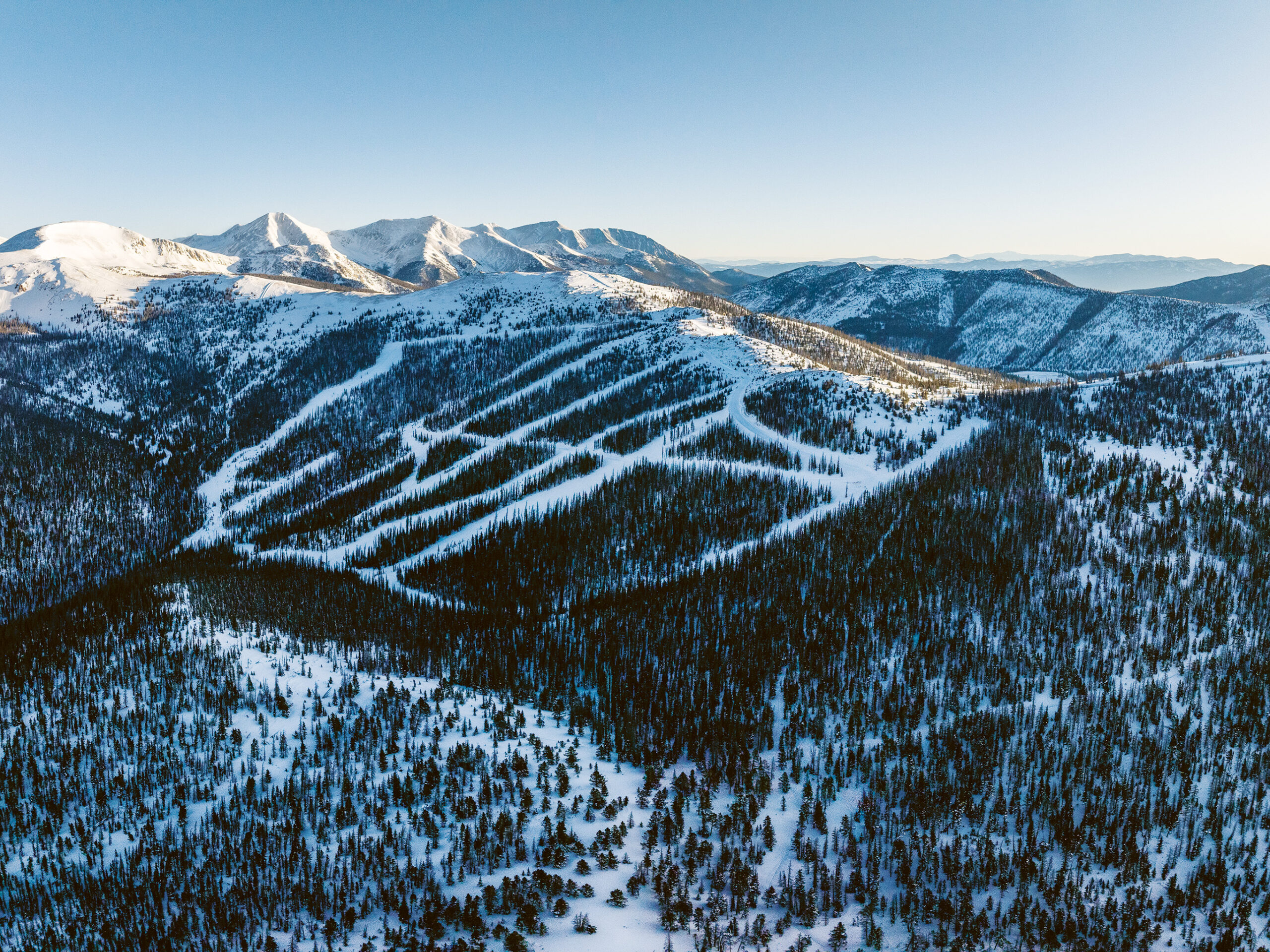
- Town: Salida
- Distance from Denver: 125 miles
- Pass: CSCUSA
Many things—like the addition of a lodge and tubing and terrain parks—have changed since Monarch Mountain opened in 1939. Its old-school vibe, however, has not. There’s no snowmaking (with 350 inches of white stuff annually, who needs it?), and all chairlifts are fixed-grip (translation: slow and ideal for catching up with a pal between runs). The 1,146-acre ski area west of Salida along the Continental Divide remains committed to one thing: “It’s all about the skiing,” says director of mountain operations Scott Pressly. “It’s about getting up on the hill with your family or friends and having a good time.”
This season, however, guests will have an additional 377 acres to explore. With the grand opening of No Name Basin (pictured), which gets its non-name from the creek below, Monarch adds a lift that services 12 intermediate and expert runs on the western side of the Divide, formerly accessible only to cat-skiing ticket holders. The expansion, which took more than a decade and cost millions, also includes a warming hut and vault toilets.
The acreage spans a wide range of steep groomers and playful glades. Skiers and riders who find joy in carving down vertigo-inducing headwalls shouldn’t miss Bonanza, which falls off the basin’s northern flank. Bump-lovers will appreciate the ungroomed moguls and steep transition of Buckhorn, located directly below the new Tomichi lift, a fixed-grip triple. Tree skiers: Head far right into Sunset Glades.
It may be tempting to fix your gaze on the powder below your planks. Instead, revel in the panorama west to the Gunnison River Valley, San Juan and West Elk mountains, and maw of the Black Canyon of the Gunnison. “Getting on the west side and having that experience of nature and not all of those other distractions that the modern world brings to us,” Pressly says, “it’s going to be that moment of Zen.”
Powderhorn Mountain Resort
- Town: Mesa
- Distance from Denver: 233 miles
- Pass: CSCUSA, Indy
Powderhorn is about as unpretentious as Colorado skiing gets. It’s a locals’ hill at heart—one that happens to be perched on the slopes of the largest flattop mountain in the world. And schussing down the Grand Mesa should be on every skier’s bucket list: Drop into Maverick, a seemingly endless roller on the front face, to look out across the Western Slope, where the horizon glows with red-rock cliffs and desert canyons. It’s skiing with a Wild West twist.
Purgatory Resort
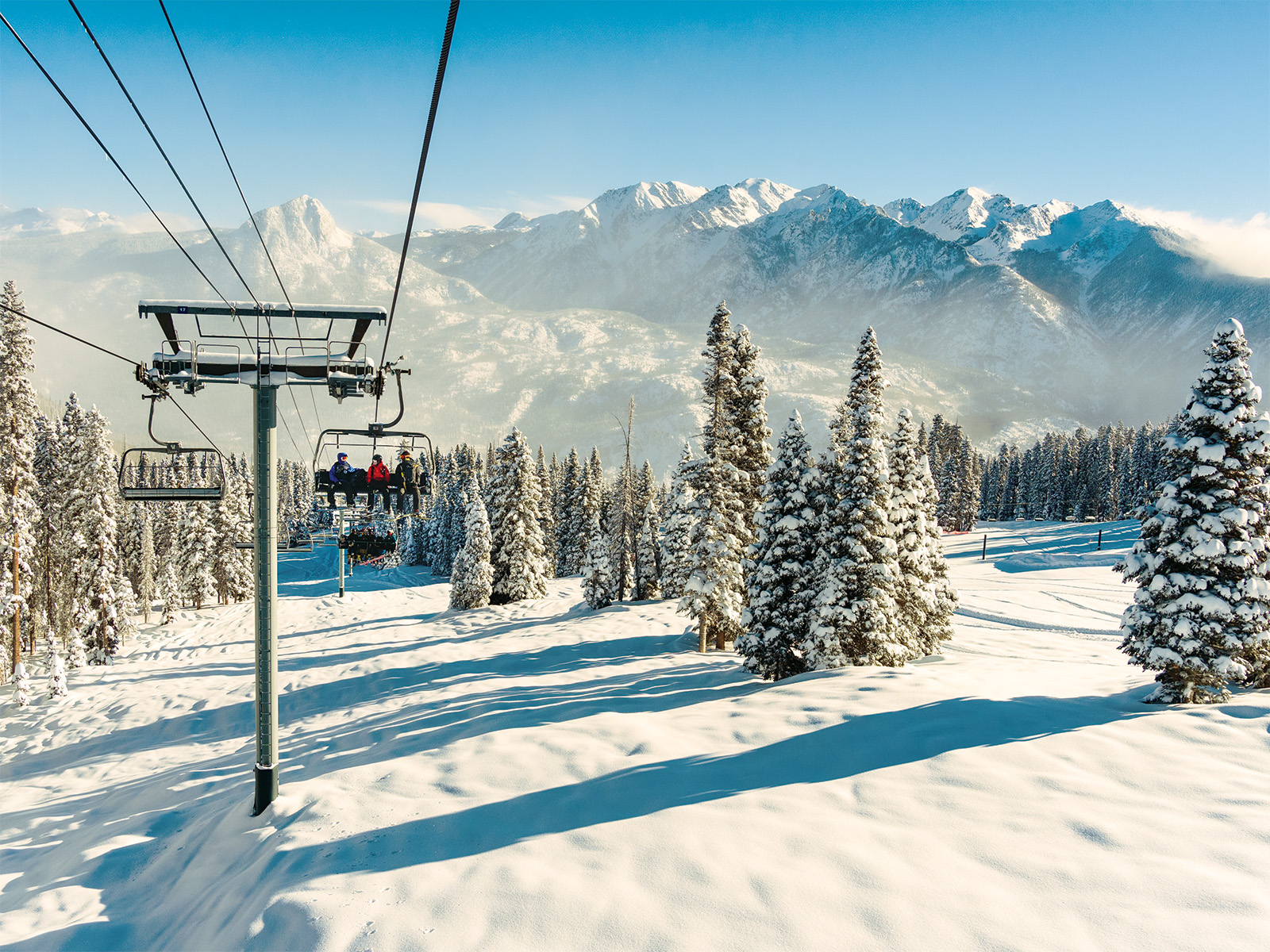
- Town: Durango
- Distance from Denver: 363 miles
- Pass: CSCUSA, Power Pass
When you buy in advance, lift tickets at this Powder Highway stunner cost as little as $15 midweek. That’s reason enough to plan a trip to southwestern Colorado, where average annual snowfall at Purgatory exceeds 250 inches. It’s an intermediate mountain comprising 65 percent blue and green runs, but for some classic San Juan freeskiing, dip into the Ambassadors’ Glade off the front side, where small cliffbands provide natural drops and, if the snow is good, pillow lines. Rejoin your buddies on Upper Demon for an eyeful of the pink-hued Needles en route to the base.
Silverton Mountain
- Town: Silverton
- Distance from Denver: 330 miles
- Pass: None
Labeling Silverton a “resort” is a stretch: It has no village and operates one lift. But for experts itching to try big-mountain skiing, there is no better place to pillage powder in a controlled environment. The single double chair serves a menu of expert lines—more, if you’re willing to shoulder your planks and hike a ridgeline at 12,000 feet—and helicopters and snowcats unlock untouched bowls and couloirs. Hire a guide to direct you to the day’s best thrills—and don’t forget your avalanche equipment.
Ski Cooper
- Town: Leadville
- Distance from Denver: 109 miles
- Pass: CSCUSA
Ski Cooper may not boast the acreage of its Epic or Ikon neighbors, but what it lacks in size it makes up for in retro charm. Nab a ticket (often less than $50 on weekdays) and putter up the 10th Mountain double chair to scout for fresh corduroy: Cooper rotates its grooming schedule to keep trails soft. Bury your edges into Trail’s End, a flowy lap along a lodgepole forest near the boundary, or, if temps plummet, try Vendome Burn, a sun-splashed spine off the 11,757-foot summit.
Snowmass
- Town: Snowmass Village
- Distance from Denver: 160 miles
- Pass: Aspen Snowmass, CSCUSA, Ikon, Mountain Collective
The closest thing to a truly self-contained ski resort among Aspen’s four mountains, Snowmass (the largest at 3,300-plus acres) has a lively village and terrain for every ability. Such a distinction makes it a good choice for family getaways and group trips. Rally your crew for a lap down Sneaky’s, a groomed roller coaster that hugs the resort’s edge, offering views of the Roaring Fork Valley and ample opportunities to duck into Sneaky’s Glades for a sample of Aspen’s ballyhooed low-angle tree skiing.
Fuel Up: Load your pockets with handhelds from the new SnacFood Empanadas hut, which debuted on the Snowmass Mall this summer.
Steamboat Ski Resort
- Town: Steamboat Springs
- Distance from Denver: 160 miles
- Pass: CSCUSA, Ikon, Mountain Collective
In winter, snowbirds flock to Steamboat to surf its light, fluffy (and trademarked!) Champagne Powder snow, which averages just six percent water content, compared to the typical 15 percent elsewhere in the West. When the pow piles up—and with an average of 307 inches annually, it does—Olympic boarder and Ski Town USA native Taylor Gold heads for Nelson’s Run. “There are so many little hits to jump off and aspen groves on both sides,” he says.
Fuel Up: Cheers a good day on the hill at Storm Peak Brewing Company’s new Bus Stop Taproom & Kitchen location, which has 20 taps (and a Butterbeer ice cream float for groms) near the base of the mountain.
Sunlight Mountain Resort
- Town: Glenwood Springs
- Distance from Denver: 169 miles
- Pass: CSCUSA, Indy
Sunlight is the locals’ alternative to Aspen: small, family-friendly, affordable (day passes hover around $75), and refreshingly unpretentious. One knock on the place has been its hella slow, 50-plus-year-old lifts. That changes this season, with two of its three chairs being replaced. Catch a ride up the new Primo lift, now a fixed-grip quad, to steer the family down The Parks. The mellow cruiser falls off the 9,895-foot Compass Peak summit with in-your-face vistas of the Roaring Fork Valley and picturesque Mt. Sopris, an almost-thirteener that rises above Carbondale.
Telluride Ski Resort
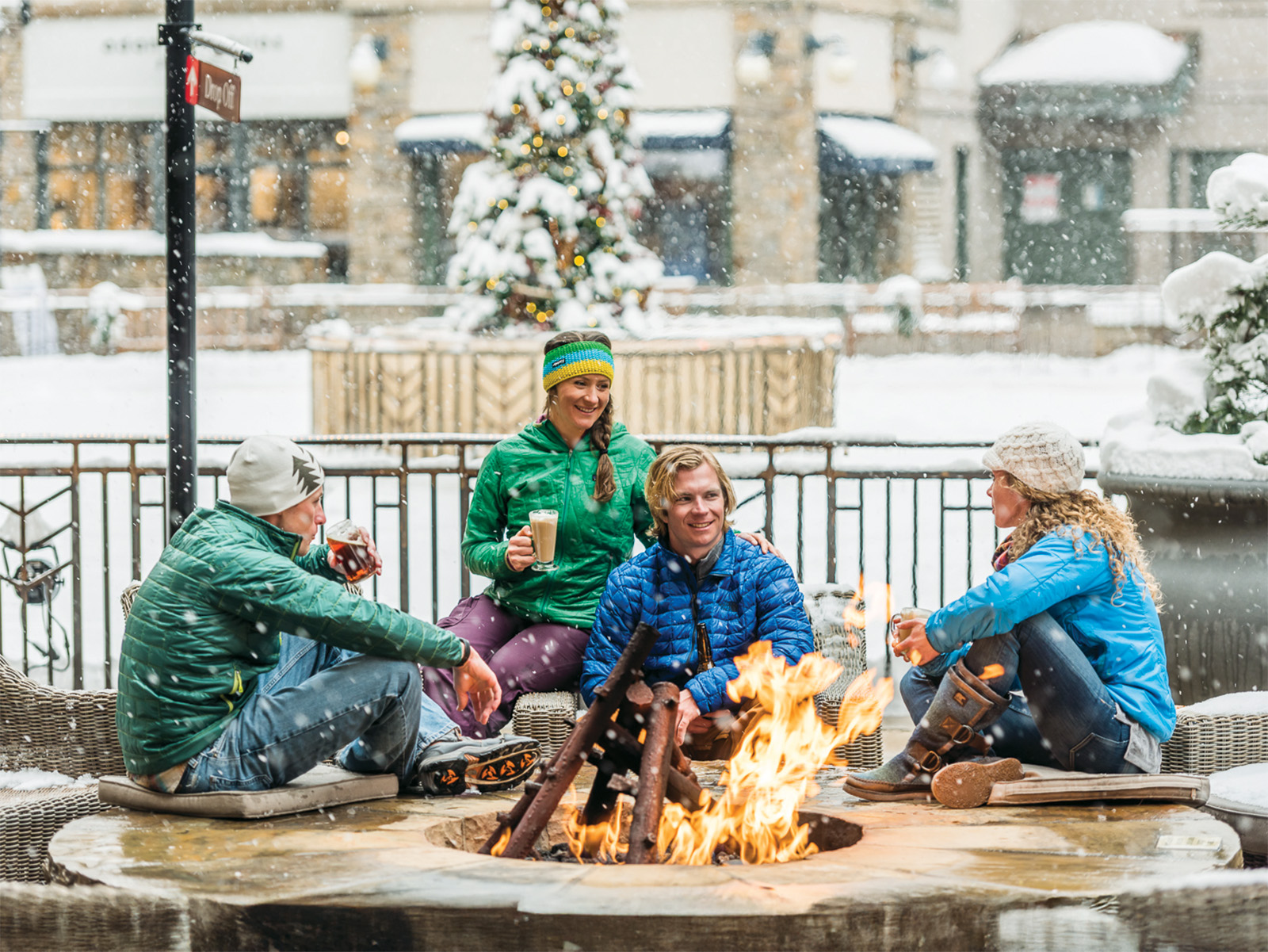
- Town: Mountain Village
- Distance from Denver: 360 miles
- Pass: CSCUSA
Forget crowded lift lines and highway-adjacent amenities. Telluride pairs historical charm with world-class riding, and everyone scores San Juans scenery—even in the learning and intermediate areas (60 percent of the resort). If you’re nifty with your boards, take pro freeskier Bobby Brown’s advice and head to Little Rose off the Gold Hill Express. “It’s a natural halfpipe that holds snow—amazing tree skiing and steep,” he says.
Vail Mountain
- Town: Vail
- Distance from Denver: 100 miles
- Pass: Epic
Distilling Colorado’s largest ski area—5,317 acres, 195 trails, 32 lifts—into one must-try lap is impossible. Every front-side lift serves an easy way down, and intermediates can slash groomers on nearly every slope. The prize is the Back Bowls: a 3,017-acre mecca of expert terrain. For a Tour de Vail, choose your own adventure there (lower Genghis Khan is rarely bumped out; Shangri-La hides powder stashes), then navigate to the front side and link Avanti (wide and cruisey), Lindsey’s (nice snow near the trees), and Pepi’s Face (a miserable but efficient sheet of ice). Your landing spot: Vail Village for happy hour and people-watching.
Winter Park Resort
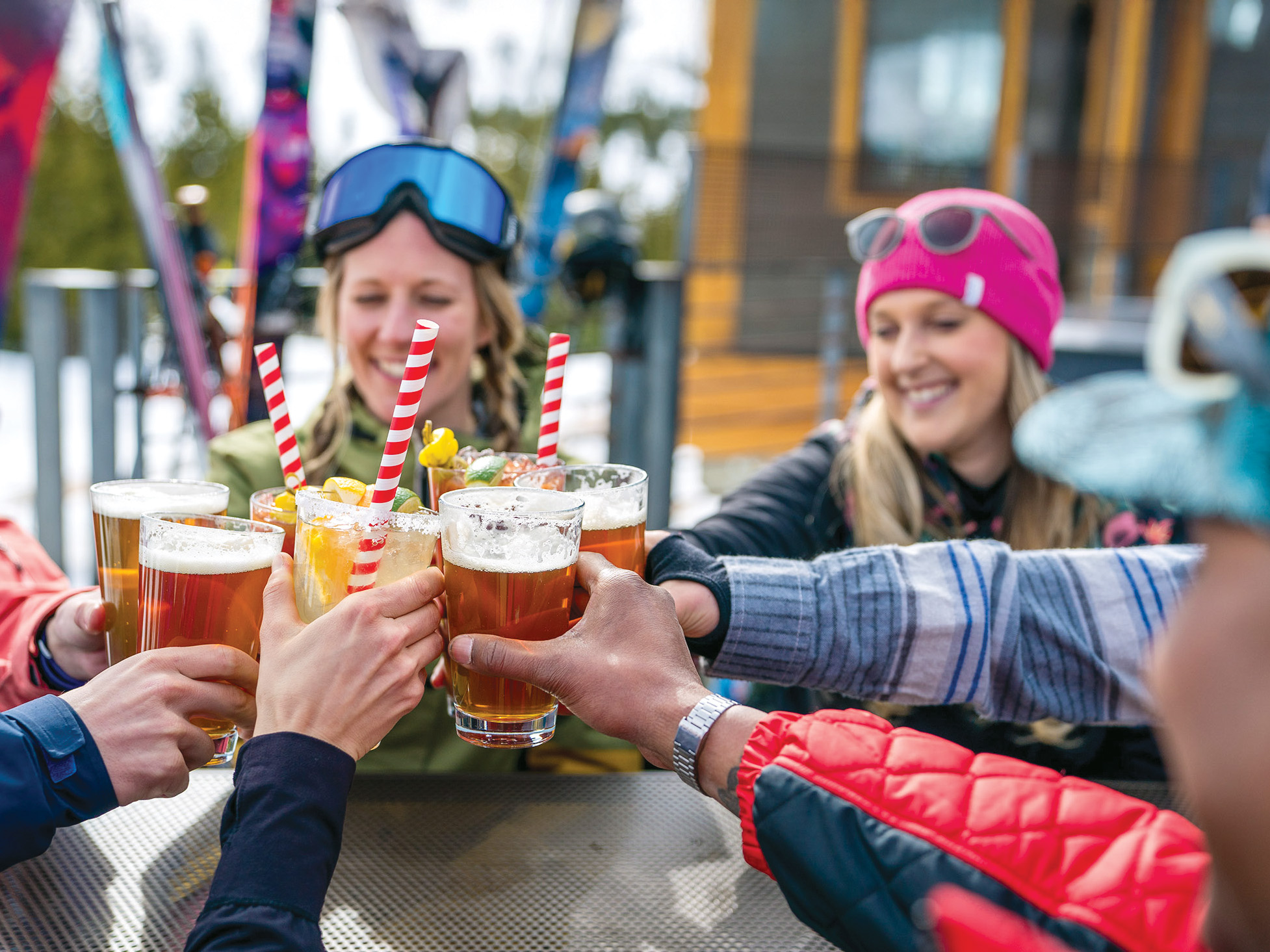
- Town: Winter Park
- Distance from Denver: 67 miles
- Pass: CSCUSA, Ikon
When the Winter Park ski area first welcomed guests in January 1940, it didn’t count Mary Jane—its famously ungroomed, mogul-packed marquee mountain—as in-bounds territory. At that time, a club of Front Range–based downhill devotees owned the land. Its members would drive over Berthoud Pass to boot up and rip down one of the first recognized alpine ski runs in the Western United States. Its name, a nod to the lady of the night who owned the land in the 1880s, was the Mary Jane Trail.
Over the next few decades, Winter Park higher-ups watched as new resorts along the I-70 corridor slowly siphoned off their customers. Eager to give skiers a reason to veer right onto U.S. 40—rather than continue toward the about-to-be-completed Eisenhower Tunnel—they stretched their ski area onto Mary Jane Mountain. On January 10, 1976, Winter Park dropped the rope to a new 350-acre playland, a terrain expansion that was, in its day, among the largest in the nation.
The Jane, as she’s known to the initiated, offered expert skiers densely treed, difficult slopes complete with cliff drops for those who wanted them. It still does—especially with expansions into the Parsenn Bowl and the Cirque. “[Mary Jane] is steep, it can be technical, and there’s a lot of variety,” says Natalie Newberry, who’s logged more than a decade as a ski patroller at Winter Park Ski Resort. “You hear it a lot: Diehards go for the Jane.”
This season, as Mary Jane recognizes 50 years as part of her home resort, expect a music-filled, giveaway-rich celebration on January 10 and 11, as well as yearlong tributes like commemorative chairs on the Super Gauge and Challenger lifts. The most fitting homage any lover of the Jane can make, however? A warm-up lap down her intermediate namesake trail before hitting a quad-scorching bump run like Pine Cliffs or Outhouse.
Wolf Creek Ski Area
- Town: Pagosa Springs
- Distance from Denver: 251 miles
- Pass: None
Wolf Creek is a powder paradise, where storms from the Pacific Ocean and the Gulf of Mexico funnel into north- and northeastern-facing slopes, delivering an average of 430 inches annually. Expert and advanced terrain off the Alberta lift holds soft snow deep into spring, while Navajo Trail, a two-mile-long run accessed from the Treasure Stoke or D. Boyce lifts, rolls along the perimeter of the big-view Boundary Bowl and threads through open aspen glades. The village and amenities are simple, but every trail maximizes carving time over waiting in a lift line—a major perk at Colorado’s snowiest resort.
8 Awesome Community Ski Hills in Colorado
You won’t find a ton of amenities—or, in some cases, lifts—at these municipal hills, but if you’re in the area and hunting for turns, the price is right.
1. Chapman Hill Ski Area (Durango)
“Hill” is a misnomer—it’s steep. But if you’re solid on your edges, it’s a fun, ultraaffordable alternative to nearby Purgatory. Adults $16, children starting at $6
2. Cranor Ski Hill (Gunnison)
Like Crested Butte light, its four runs blend across a bowl with varying aspects, pitches, and features. Adults $25, children $15
3. Echo Mountain (Idaho Springs)
Only 36 miles from downtown, it’s the closest downhill skiing to Denver—and included on several mega passes. Bonus: night skiing. Adults starting at $50, children starting at $30
4. Hoedown Hill (Windsor)
Learn the basics or practice your technique on man-made groomers without heading into the mountains. Gear is discounted through Mountain Rentals. Starting at $20
Read More: Here’s Who Will Love Hoedown Hill, Colorado’s Newest Ski and Tubing Area
5. Howelsen Hill Ski Area (Steamboat Springs)
Shred North America’s oldest operating ski area, then gape at the legendary jump complex where Olympians train—and fly. It’s also included on multiple pass collectives. Adults $49, children $36
6. Kendall Mountain Recreation Area (Silverton)
If a heli drop is out of your bag (or budget), rip around this more traditional ski area, which has one double chairlift and half a dozen runs. Adults $31, children $22
7. Lake City Ski Hill (Lake City)
A surface lift travels 1,000 feet up a tongue of corduroy for relatively long, beginner-friendly runs. Cool: Rental equipment is included with a day pass. Adults starting at $25, children starting at $15
8. Lee’s Ski Hill (Ouray)
With a single rope tow and 75 feet of vert, it’s not exactly destination-worthy. But it’s free, making it a nice add-on to a hot-springs or ice-climbing itinerary.
Read More: Barely Hanging On



